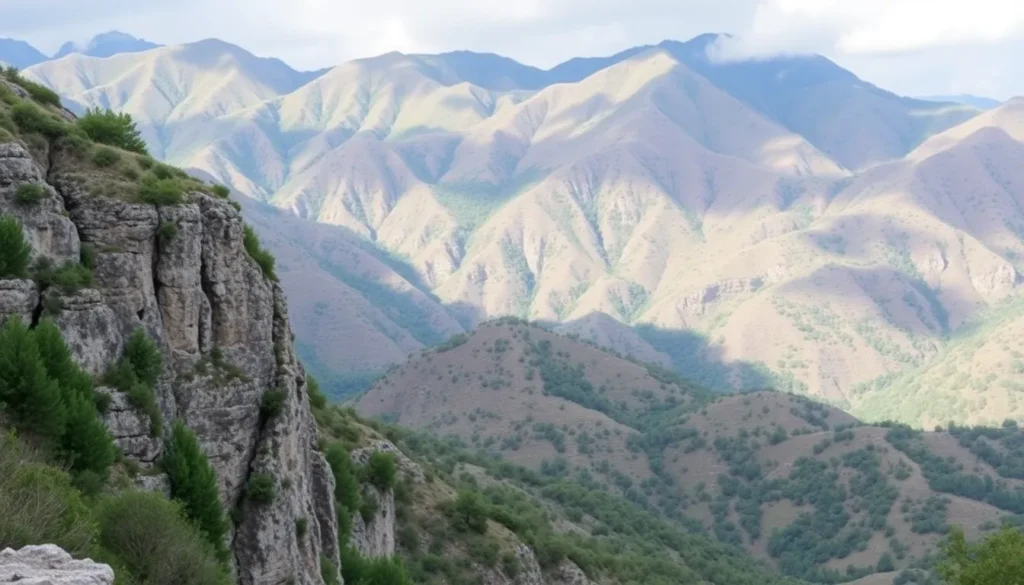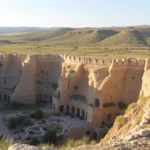Scenic Drive Through La Alpujarra Granada

Have you heard about the stunning beauty of the Alpujarra Granadina? This picturesque region in southern Spain is not just a place to visit; it’s an experience that awakens your senses and invites you to immerse yourself in its breathtaking landscapes and rich culture. If you're planning a road trip through the Alpujarra Granadina, get ready to embark on a journey filled with enchanting villages, dramatic mountain scenery, and a taste of local traditions!
Picture yourself driving along winding roads, with dizzying canyons on one side and majestic mountains on the other. As you navigate through the charming whitewashed villages, the vibrant flowers and serene fountains create a captivating atmosphere that feels like stepping into a painting. In the Alpujarra, you disconnect from the chaos of modern life and reconnect with nature. Ready to discover one of Granada’s best-kept secrets? Let’s dive in!
1. Introduction to the Alpujarra Granadina
The Alpujarra Granadina is a breathtaking region located at the foot of the Sierra Nevada mountains. Despite its relatively small size, it boasts incredible landscapes and remote villages that are a true marvel. The area has a rich history, having been shaped by various civilizations, especially the Muslims from the Kingdom of Granada, who left their mark until their expulsion following the Rebellion of the Alpujarras in 1570.
Exploring this region by car is highly recommended, although winter visits may be challenging due to snow on the roads, especially in areas exceeding 1,000 meters in altitude. The roads are generally well-maintained, but be prepared for sharp curves and steep drops.
The most captivating stretch of road lies between Lanjarón and Tévelez, covering approximately 55 kilometers. Along this route, you will encounter beautiful villages like Soportújar, Pampaneira, Bubión, and Capileira, each with its unique charm.
Beyond Trévelez, the road continues into the mountainous terrain leading to Laroles, at the other end of the Alpujarra Granadina. From here, you can either venture north through Sierra Nevada via the Puerto de la Ragua (2,000 meters) or continue exploring the Alpujarra, where the landscapes start to change.
Lanjarón served as our entry point into this enchanting area. While we didn't visit its famous spa, we took a delightful stroll through the town center, sampling its water and discovering picturesque corners like the Plaza del Ayuntamiento and the photogenic white and blue house along Calle Real.
Our next stop was Órgiva, where we quickly admired the Parroquia De Nuestra Señora De La Expectación, often touted as the most beautiful church in the area. Surrounding Órgiva are numerous olive oil mills, making it a perfect opportunity to pick up a bottle of exquisite oil that rivals the best in Spain. We had our eyes on Almazara La Flor De La Alpujarra, but alas, it was closed during our visit.
If you're considering buying olive oil directly from a mill, keep in mind the different varieties available. The most sought-after are the Extra Virgin and Organic options. The olive harvest occurs between October and November, so if you're purchasing during this time, ask if it's from the new yield for the best quality. Prices typically range from €4.50 for Extra Virgin to €5.50 for Organic, with larger containers priced more economically.
In Órgiva, a fork in the road marks the beginning of the true Alpujarra route, leading you into an area brimming with natural beauty and cultural treasures.
Exploring Soportújar
As you arrive in Soportújar, you might feel a chill run down your spine—this is the village of witches! According to local lore, witches and sorceresses once gathered here for their rituals. Statues of witches, black cats, and symbolic representations of magic fill the village, creating an atmosphere steeped in mystery.
But that’s not all; a path leads from Soportújar to O Sel Ling, a serene Buddhist center nestled in the high Alpujarra. It's a fascinating contrast to the village's witchy reputation!
Pampaneira: A Gem of the Alpujarra
Pampaneira is celebrated as one of the most beautiful villages in all of Andalucía, as proudly announced on a welcome sign. After parking near the Plaza de la Libertad, you'll find the Iglesia de la Santa Cruz and a variety of artisan shops. This area is renowned for its colorful handicrafts, particularly vibrant rugs that contrast beautifully against the white walls.
Explore the narrow streets and let your instincts guide you to hidden gems. If you'd like a more detailed route, check out our post on things to see and do in Pampaneira, which includes delicious culinary recommendations.
Bubión: A Hidden Treasure
Located halfway between Pampaneira and Capileira, Bubión may be less known, but it's definitely worth a visit. Stroll through its steep, cobbled streets and admire its traditional Arab architecture. Reach the main square, home to the Ayuntamiento, the Casa Alpujarreña Museum, and the Iglesia de la Virgen del Rosario, distinguished by its Mudéjar style.
A notable feature of this church is its tower, once a castle, where local legend claims the spirit of the beautiful Mora Zecilia still resides, trapped within its walls during the Morisco revolt. You can find a plaque in the square detailing this captivating story.
Capileira: The Summit of Adventure
Ascending further into the mountains, we arrive at Capileira, perched at nearly 1,500 meters above sea level. This charming village was where we chose to stay, specifically at the Hotel Rural Alfajía de Antonio, which offered breathtaking views of the valley. If you look up, you can see the peaks of Pico Veleta and Mulhacén, the highest mountains in the Iberian Peninsula, reaching around 3,500 meters.
Capileira is not only perfect for wandering its quaint streets and enjoying its viewpoints but is also an excellent base for hiking. There are trails for every level of experience; we opted for a short hike that led us to a scenic river area.
To discover more about hiking trails and activities in Capileira, check our post on what to do in Capileira.
Before reaching Trévelez, we passed through the villages of Pitres and Pórtugos, stopping at the Ermita Fuente Agria to taste its famous waters, which vary in flavor. The left tap dispenses regular water, while the right had a fizzy, iron-rich variety that was quite peculiar! There’s also a lovely picnic area and stairs leading to the Chorrerón, a small waterfall with striking orange-hued waters.
Trévelez: The Home of Jamón
Trévelez is famously known for its delicious ham, a highlight of the Alpujarra Granadina. While you can find it in supermarkets, purchasing it from local shops, like Tienda Maruja, seems to enhance its flavor significantly.
The village is divided into two areas: the upper part, resembling the other charming villages, and the lower area, more traditional in style, featuring bars and shops, including the Monument to Trévelez Ham.
It's important to note that the term refers to ham produced throughout this region, including nearby towns like Juviles, which is also acclaimed for its quality.
While there are many more villages to explore in the Alpujarra, this route offers a comprehensive experience perfect for a day or two (or longer if you wish to linger!).
2. Map of the Road Trip through the Alpujarra Granadina
Below is a detailed map of the route showcasing the places to visit and recommended spots for dining and accommodation:
3. Essential Tips for Visiting the Alpujarra Granadina
After planning your itinerary, here are some valuable tips to enhance your visit:
- The road trip through the Alpujarra Granadina can be completed in one day, but ideally, you should allow at least two days for a more relaxed experience and overnight stay in the region. If you can't manage two days, focus on the most beautiful area: Pampaneira, Bubión, and Capileira.
- We entered through Lanjarón and exited via Trévelez, continuing towards Alpujarra Almeriense. If you have 4-5 days, consider visiting Alpujarra alongside other destinations like Granada or Almería and the Cabo de Gata for a comprehensive trip.
- If you plan to stay overnight in the Alpujarra, we recommend the central area (Pampaneira, Bubión, or Capileira). We spent a night at Alfajía de Antonio, which we highly recommend.
- For hiking enthusiasts, there are numerous stunning trails available. One leads to Mulhacén, the highest peak in the peninsula, or to the Siete Lagunas. Check out this link for more information on hiking in the area.
- Despite the small size of the villages and narrow streets, most have free parking available. You can find these locations on Google Maps, and they are well marked upon entering each village.
- The best souvenir, aside from photographs, would be a local product. Our favorites include olive oil, cherries (available from May to June), walnuts (from September), Trévelez ham, goat cheese, and honey.
- Check out the 10 best things to see and do in Alpujarra Granadina for more inspiration.
We hope this travel guide to the Alpujarra helps you plan an unforgettable visit! For us, a road trip through the Alpujarra Granadina is undoubtedly one of the best escapades you can experience in Andalucía.
Explore these incredible landscapes and immerse yourself in the rich culture. The Alpujarra Granadina awaits, inviting you to unravel its secrets and embrace its magic!





Deja una respuesta